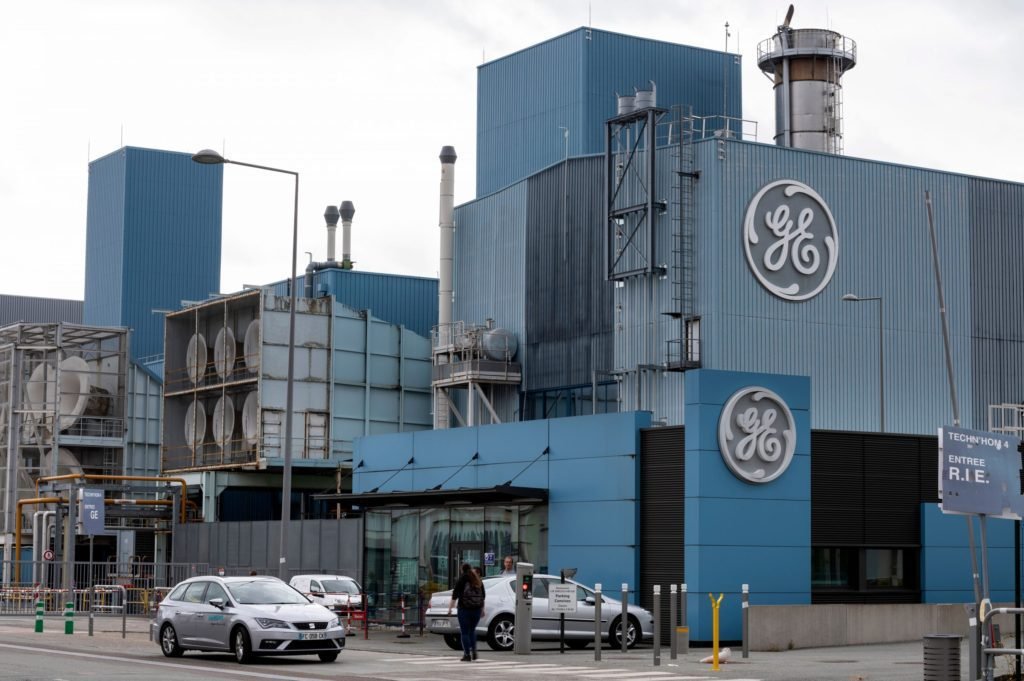General Electric Co. is offering to buy back as much as $23 billion of bonds, making it one of the largest corporate debt buybacks ever as the industrial giant carries out a plan to slash borrowings.
GE is targeting a series of more than 50 bonds maturing through 2050 in an offer that expires on Dec. 9, the company said in a statement Wednesday. The offer comes a day after the conglomerate said it will split into three separate companies in the final stage of a great deleveraging for what was once among the most heavily indebted U.S. corporations.
The company’s longer-dated bonds offer some of the juiciest coupons in the investment-grade bond market, and bond fund managers would be hard-pressed to replace them. The company’s about $11.5 billion of 4.418% senior preferred notes due in November 2035, which were included in the tender offer, rose to around 124 cents on the dollar Wednesday, up from about 119 cents a month ago, according to data from the Trace bond-pricing system. The bonds are one of the most actively traded in the market Wednesday.
“By the time this is done it will be quite expensive,” said Scott Kimball, head of investments for U.S. fixed income at BMO Global Asset Management. “The 2035 are a bellwether for our liability-driven investing strategies, and I won’t be parting with them easily.”
GE is on target to cut its debt load by more than $75 billion in the three years through next month thanks to operational changes designed to boost cash flow and profit margins. The targeted bonds are denominated in U.S. dollars, euro and pounds sterling with offers of $50, 50 euros or 50 pounds for early participation — depending on the currency of the bond — per 1,000 in principal.
About 70% of the tender offer is targeted at the intermediate to long end of its obligations and provides a “credible plan to improve cash flow in front of GE’s pending breakup,” according to Joel Levington, credit analyst for Bloomberg Intelligence.
While many investors may be reluctant to part with their GE bonds, a successful execution of the buyback will be a “very good sign” for BBB tier — the lowest rung of high-grade — and for corporate credit as a whole, according to Matt Brill, head of North America investment-grade at Invesco Ltd.
“This has not been the easiest of three years and if a company is able to pay down this amount of debt in a crisis, that gives me comfort in owning investment-grade bonds over a longer period of time because it just shows the flexibility and nimbleness for corporations to survive,” said Brill in a telephone interview Wednesday.
GE’s split into a health-care business, an energy-focused entity and a jet-engine division marks a stunning breakup of the iconic manufacturer that traces its roots back to Thomas Edison and whose sprawling businesses once made it the world’s most valuable company.
Credit default swaps tied to GE rallied to their best levels in more than three years Tuesday morning in New York, implying that investors see less risk in owning the company’s debt in the years ahead.
GE has been slashing its debt since Chief Executive Officer Larry Culp took the helm in 2018. Large asset disposals, including the $30 billion sale of its aircraft leasing unit to AerCap Holdings NV earlier this year, are helping GE achieve that goal. The firm reported $65.8 billion of debt as of Sept. 30, down from $134.6 billion at the end of 2017.
Bank of America Corp. and JPMorgan Chase & Co. are acting as the global coordinators and the lead dealer managers, while Deutsche Bank AG and Morgan Stanley are acting as lead dealer managers, according to the statement.
(Except for the headline, this story has not been edited by The Finance World staff and is published from a syndicated feed.)


